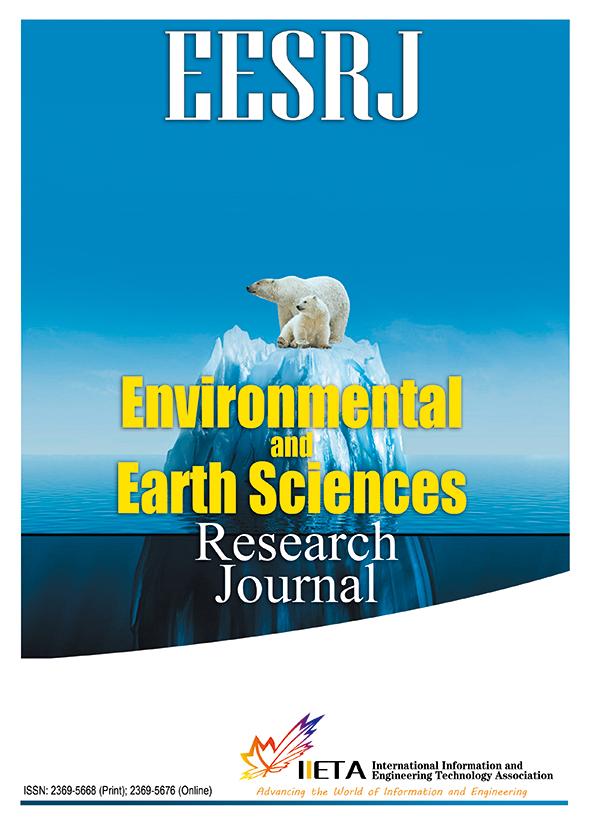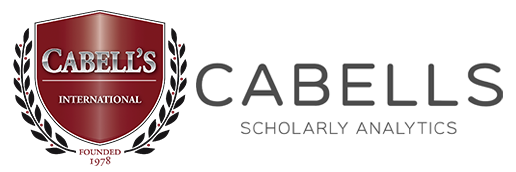Environmental and Earth Sciences Research Journal
- ISSN:2369-5668 (print); 2369-5676 (online)
- Indexing & Archiving:CrossRefPorticoEBSCOhostCabell's DirectoryGoogle ScholarPublonsScienceOpenIndex CopernicusMicrosoft AcademicCNKI ScholarBaidu Scholar
- Subject:ChemistryEngineeringEnvironmental & Earth Sciences
Environmental and Earth Sciences Research Journal (EESRJ) is a top-rated international quarterly reporting the most outstanding discoveries in both basic and applied research of environmental and earth science. Our mission is to build an open-access platform covering all aspects of environmental and earth science, and develop into a premier hub of quality research around the world. All submissions to the journal will be evaluated for novelty and usefulness to the scientific community and society at large, before being sent to review or reject. The editorial board welcomes original papers on environmental and earth sciences, especially those selected for presentation at international conferences or academic forums, and promises to conduct rigorous review of the selected papers. The journal is published quarterly by the IIETA.
The EESRJ is an open access journal. All contents are available for free, that is, users are entitled to read, download, duplicate, distribute, print, search or link to the full texts of the articles in this journal without prior consent from the publisher or the author.
Focus and Scope
The EESRJ welcomes original research papers, technical notes and review articles on the following disciplines:
- Environmental sciences, environmental engineering, environmental pollution, environmental biotechnic, toxicology
- Volcanology, tectonics, neotectonics, geomorphology, geochemistry, geothermal energy, glaciology, ore geology, environmental geology
- Geological engineering, geotechnics
- Geo-hazards like tsunami, earthquake, landslide, debris flow and subsidence
- Mining engineering, rock/soil improvements and development
- Petroleum engineering, blasting engineering
- Applications of remote sensing (RS), geographical information system (GIS) and global positioning system (GPS) in earth sciences and engineering
- Meteorology and atmospheric sciences
- Wastewater treatment, water resources and engineering, groundwater, contaminant treatment
- Offshore and marine geotechnics
- Fertilizer pollution control, agrochemicals, industrial waste, urban landfills, traffic congestion
Publication Frequency
The EESRJ is published quarterly by the IIETA, with four regular issues (excluding special issues) and one volume per year.
Section Policies
Regular Papers
- Open Submissions
- Indexed
- Peer Reviewed
Peer Review Process
The IIETA adopts a double blind review process. Once submitted, a paper dealing with suitable topics will be sent to the editor-in-chief or managing editor, and then be reviewed by at least two experts in the relevant field. The reviewers are either members of our editorial board or special external experts invited by the journal. In light of the reviewers’ comments, the editor-in-chief or managing editor will make the final decision over the publication, and return the decision to the author.
There are four possible decisions concerning the paper: acceptance, minor revision, major revision and rejection. Acceptances means the paper will be published directly without any revision. Minor revision means the author should make minor changes to the manuscript according to reviewers’ comments and submit the revised version to the IIETA. The revised version will be accepted or rejected at the discretion of the editor-in-chief or managing editor. Major revision means the author should modify the manuscript significantly according to reviewers’ comments and submit the revised version to the IIETA. The revised version will be accepted or rejected at the discretion of the editor-in-chief or managing editor. Rejection means the submitted paper will not be published.
If a paper is accepted, the editor-in-chief or managing editor will send an acceptance letter to the author, and ask the author to prepare the paper in MS Word using the template of IIETA.
Plagiarism Policy
Plagiarism is committed when one author uses another work without permission, credit, or acknowledgment. Plagiarism takes different forms, from literal copying to paraphrasing the work of another. The IIETA uses CrossRef to screen for unoriginal material. Authors submitting to an IIETA journal should be aware that their paper may be submitted to CrossRef at any point during the peer-review or production process. Any allegations of plagiarism made to a journal will be investigated by the editor-in-chief or managing editor. If the allegations appear to be founded, we will request all named authors of the paper to give an explanation of the overlapping material. If the explanation is not satisfactory, we will reject the submission, and may also reject future submissions.
For instructions on citing any of IIETA’s journals as well as our Ethics Statement, see Policies and Standards.
Indexing Information
- DOAJ
Web: https://www.doaj.org
- Portico
- Index Copernicus
Web: http://journals.indexcopernicus.com
- Google Scholar
Web: http://scholar.google.com
- Microsoft Academic
Web: https://academic.microsoft.com/home
- CNKI Scholar
Included in
- Crossref.org
Web: https://www.crossref.org/
ISSN: 2369-5668 (print); 2369-5676 (online)
For Submission Inquiry
Email: editor.eesrj@iieta.org










